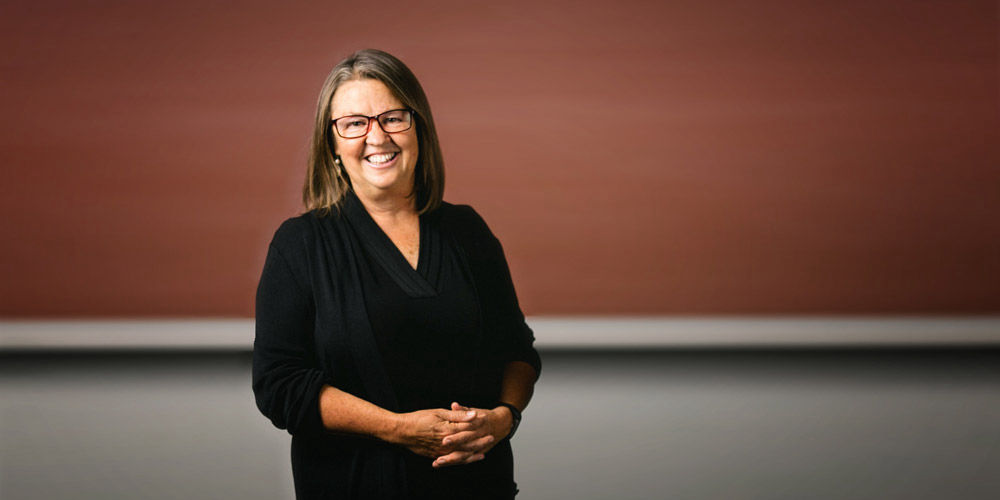Utah Advanced Communication Training (UACT)
UACT is offered to all University of Utah Health providers, residents, fellows and clinical staff. More info here.
oan Sheetz’s journey has been circuitous. First came a career as a Veterinary Technician, then medical school, pediatric residency, and almost 10 years at Fourth Street Clinic treating homeless children and teens in Salt Lake City. Then, in 2005, Joan joined a working group helmed by University of Utah Medical Group President Ed Clark to organize a palliative care program at Primary Children’s Hospital. Ten years later, the success of Rainbow Kids led Sheetz to collaborate on further training: first, Utah Certificate of Palliative Education—UCoPE, which extends palliative care education to physicians, followed by UACT, which emphasizes authentic communications and meaningful interactions.
We sat down with Joan to learn from her expertise and what to expect as a participant in UACT.
Skills to confront conflict head on
As the Resiliency Center was being developed, they found that a huge part of what drives job satisfaction is good communication. When Anna Beck, Nate Wanner, Vicki Wilkins, and I planned UACT, we wanted to include more upstream skills. We wanted it to be broader than just end-of-life palliative care.
In addition to fundamental communication skills, such as setting an agenda for a visit and delivering bad news, our training helps with conflict resolution. Nobody likes conflict. It’s uncomfortable. It makes people react emotionally and from a defensive posture. When you do engage in conflict, it can feel like you’re being rude. Things can escalate quickly. But in UACT, we deal head on with conflict by learning:
- How to recognize it
- How to de-escalate it
- How to name it
- How to sincerely process it
- How to make it better instead of just side-stepping it
Learn to get comfortable going to "The Hard Places"
As a pediatric palliative care provider, I’ve learned how to not hold on to things. It’s hard, but I’m able to allow people’s sadness and grief to wash through me—which is not the same as not being affected by it. Still, end-of-life issues don’t pull me down as much as they do to other people.
Learning those skills is helpful for other providers, too, who might find managing conflict or having difficult conversations hard. That’s why we provide a road map with step-by-step instructions for delivering bad news, which leads to more compassion for patients and a heightened sense of satisfaction for family.
Give role playing and positive feedback a chance
In UACT, attendees get to practice these kinds of difficult conversations, which is important. Everyone comes in believing they hate role play, and everyone exhibits self-doubt while they’re doing it. But they also come out saying, “That was the most powerful part of the course.”
At the beginning of the training, we set up a safe zone—a culture of responsibility that encourages others to provide positive feedback. We structure it as, “What went well?” not “What did you screw up?” That allows people to slow down and think about what they said, perhaps even rewinding the conversation to try again. You don’t get that opportunity in real life.
No matter where you are in your career, UACT can help
Whether you’re in training, actively practicing, or at the executive level, UACT is valuable. Physicians who trained in the last five years may have heard of the SPIKES protocol for delivering bad news, but people who are mid-career probably never got any training in how to tell someone difficult news or to manage conflict—I know I didn’t. When I trained, there wasn’t even a concept of conflict with patients. It was, “You are the doctor. You are the authority. You have the knowledge, and the patients are there to receive it.”
When I worked at the homeless clinic after residency, I learned how to set boundaries while understanding the patient’s goals. If your goals as a provider don’t match with the patient’s, nothing will change. Eliciting the patient’s goals allows you to build a relationship. And that’s what UACT is all about. No one leaves saying, “I wish I hadn’t taken this course.”
The patient-doctor relationship is therapeutic in and of itself
We have residents who rotate through palliative care service, and we frequently hear them say, “This is why I went into medicine—to talk to my patients and show them humanity.” In the rapid day-to-day clinical setting, that’s harder to find. Through UACT, we’re teaching people that it doesn’t take as much time as you might think. By asking a few strategic questions, you can develop a relationship in a manageable timeframe.
Joan Sheetz
In November 2017, hepatologist and liver transplant specialist Juan Gallegos-Orozco completed the inaugural Utah Advanced Communication Training seminar. Accelerate sat down with Gallegos-Orozco to talk about UACT and how it changed his perspective on communication.
Health care is full of high emotion—especially right now. Thankfully, there’s a simple framework we can follow to de-escalate with compassion. Hospitalist and UACT co-director Claire Ciarkowski introduces NURSE: a simple mnemonic for responding with empathy.
Mindfulness can be an act of healing and resistance for Black, Indigenous, People of Color who confront microaggressions as part of everyday life. Mindfulness educators and social workers Trinh Mai and Jean Whitlock provide three steps to build mindful self-compassion for BIPOC.
